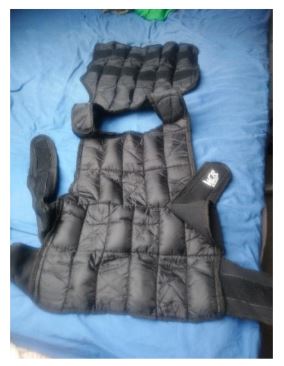
This week a bit about compression socks (or compression tights), time to increase weight or duration and my running challenge…
Compression Socks (courtesy of Realbuzz)
Compression stockings have been used in medicine for years to help improve blood and lymphatic flow. The most obvious example is flight socks worn when travelling by people at risk of deep vein thrombosis (DVT) though they are also worn for a number of other reasons such as varicose veins or even pregnancy. Made famous in running circles by Paula Radcliffe, compression socks and later compression apparel has become increasingly popular in the sporting world. But how much does it help and can it actually help you to run faster?
With compression apparel manufacturers making bold claims such as ‘improves muscular power and endurance’, research worldwide has been conducted to determine whether compression gear actually does offer the benefits it is purported to.
Useful for recovery?
Numerous studies have shown that compression apparel can reduce the severity and duration of delayed onset of muscle soreness (DOMS), increase venous return from the lower legs and enhance lactate removal. Post-race or long run is the ideal time to don your compression gear.
It is thought that the pressure exerted from compression apparel reduces tissue swelling and therefore enhances recovery, so although it may not look particularly fetching or attractive, post-race or long run is the ideal time to don your compression gear. There has also been lots of anecdotal evidence from athletes who claim that their legs feel ‘fresher’ after wearing compression gear post-recovery or when travelling.
Performance enhancing?
Although the research suggests that compression gear can help recovery, the jury is still out as to whether performance is actually enhanced whilst wearing it. A 2009 study in The Journal of Strength and Conditioning Research found that compression stockings improved running performance at submaximal intensities in moderately trained male runners. However, compression did not significantly affect VO2 max. Compression stockings improved running performance at submaximal intensities in moderately trained male runners. -Journal of Strength and Conditioning study
Some small increases in anaerobic threshold have also been noted in various studies. The theory is that the tights or sleeves reduce muscle oscillation when the foot strikes the ground and therefore this improves muscle efficiency. The majority of studies suggest however that if there are any improvements to performance as a result of compression, they are minimal.
You decide …Aside from the stats produced by the studies, the effectiveness of compression gear is hugely subjective. Compression gear certainly isn’t essential and with it being relatively expensive, it’s up to you as to whether you think it’s worth the investment. If you do decide that it’s for you then always look for medically graded compression products that provide graduated compression. The bottom line is, if you feel they work, the wear them!
The idea of training is to stress your body (muscles, joints, cardiovascular system) and to increase this stress a little more each week as you go through a continuous period of training
with no injuries and no illness. The theory is that your body will recover from each session a little stronger each time. Increasing speed or distance too quickly will bring injury and staleness.
Assuming, like many runners, you have really gone all out over the last 10 weeks of lockdown to hammer the miles or do those speed reps around the flattest roads you can find, it is now time to add a bit more stress. I am not talking to those that have been doing some crazy miles I have seen on Strava, you can look after yourselves. However, everyone else should think about adding a few more miles (sorry kilometres) each week. Make that usual 10k run, a 12k run next time, your long run a 35km instead of a 30km run. If you have been doing speed sessions, its time to do a few weeks of serious hill training. No better time to use all the different hills in Abbey Fields or your own chosen hills. If you really want to add some stress try running with some weights on your body. One of the things I treated myself to a few years back was this weight vest (full of lead weights that can be added to or removed as required). Try running with a jacket with pockets and adding some of your own weights) or just running in some heavy clothing.

When it come to your indoor work outs now is the time to add more weight or duration. Do squats with some tinned food cans in your hands, 30 step ups on the stairs holding something weighty, a few extra press ups or a minute longer plank.
*****************************************************************************************************
The key is to NOT do the same exercises or the same runs each week. Vary it every week and add a bit more challenge each week. With this in mind my Coach’s Challenge this week is a 10k run. Starting and finishing easy with a fast middle section. Try 4km easy running, then 2km fast running (at least 5k pace), then another 4km easy pace. Finding a flat or slightly downhill road would be good for the fast bit.
Stay safe and healthy….

